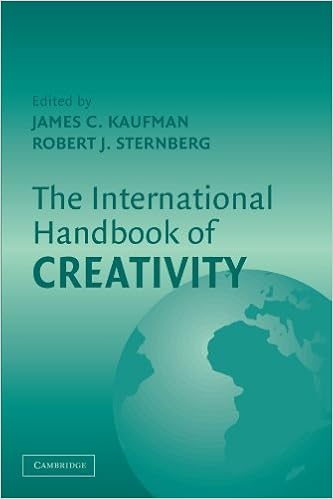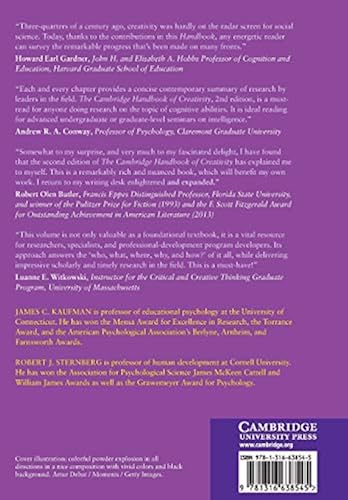

The most basic kind of creativity is (1) conceptual replication, which is a product that basically repeats what has been done before with slight variation. Some kinds of creative contributions move forward in an already existing direction. I originally proposed, and then further developed, in collaboration with James Kaufman and Jean Pretz, a propulsion theory of creative contributions that seeks to delineate the different ways in which contributions can be creative. Propulsion Theory of Creative ContributionsĬreative contributions can be of multiple kinds. Creativity Research Journal, 24(1), 3-12. The assessment of creativity: An investment-based approach.

Creativity Research Journal, 18 (1), 87–98. Wisdom, intelligence, and creativity synthesized. California Management Review, 40(1), 8–21.

Alexandria, VA: Association for Supervision and Curriculum Development. Defying the crowd: Cultivating creativity in a culture of conformity. Finke (Eds.), The creative cognition approach (pp. An investment approach to creativity: Theory and data. Current Directions in Psychological Science, 1(1), 1–5. Buy low and sell high: An investment approach to creativity. An investment theory of creativity and its development.
#Handbook of creativity sternberg full
At the same time, an individual can have a creative attitude but without the skills of creativity-such as looking for reconciliation of opposing ideas and dialectical thinking-may not reach his or her full creative potential. It is thus crucially important, especially in schools, to provide an environment that allows creativity to flourish-not just in word, but also in deed. A person can have the creative ability that would allow for creativity, for example, but without a willingness to take sensible risks or an environment that provides at least minimal support for creativity, that individual’s potential creativity may be suppressed. Such attitudes are teachable and can be ingrained in students through instruction that encourages students to think for themselves.Ĭreativity comprises several different aspects: (a) abilities, (b) knowledge, (c) styles of thinking, (d) personality attributes, (e) motivation, and especially intrinsic motivation, and (f) environment. Examples of such attitudes toward life are willingness to (a) redefine problems in novel ways, (b) take sensible risks, (c) “sell” ideas that others might not initially accept, (d) persevere in the face of obstacles, and (e) examine whether their own preconceptions are interfering with their creative process. Rather, they develop a set of attitudes toward life that characterize those who are willing to go their own way. People are not born creative or uncreative. Such limitations, however, may derive from processes of enculturation and socialization, so that it often is not clear whether restrictions on creativity are internal or, down the line, externally imposed.Ĭreativity is a decision in the same way investing is. The greatest obstacle to creativity, therefore, often is not exactly strictures from others, but rather the limitations one places on one’s own thinking. Rather, they tend to go off in their own direction, seeking to propose ideas that are both novel and useful in some way. They resist merely thinking or doing what others are thinking or doing. The creative individuals are metaphorically “buying low.“ Then, once their ideas have gained some acceptance, the creative individuals “sell high,“ reaping the profits of their good idea and moving on to the next unpopular idea.Ĭreative individuals, by their nature, tend to defy the crowd. Creative people, like good investors, generate ideas that, at the time are viewed as novel and perhaps slightly ridiculous. In particular, it is a decision to buy low and sell high in the world of ideas.

The investment theory of creativity, proposed in collaboration with Todd Lubart, holds that creativity is in large part a decision. I have developed two theories of creativity: The Investment Theory of Creativity and the Propulsion Theory of Creative Contributions.


 0 kommentar(er)
0 kommentar(er)
